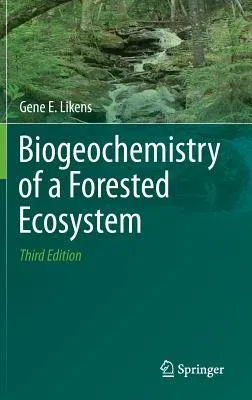Gene E Likens
(Author)Biogeochemistry of a Forested Ecosystem (2013)Hardcover - 2013, 9 August 2013

Qty
1
Turbo
Ships in 2 - 3 days
In Stock
Free Delivery
Cash on Delivery
15 Days
Free Returns
Secure Checkout

Print Length
208 pages
Language
English
Publisher
Springer
Date Published
9 Aug 2013
ISBN-10
146147809X
ISBN-13
9781461478096
Description
Product Details
Author:
Book Edition:
2013
Book Format:
Hardcover
Country of Origin:
NL
Date Published:
9 August 2013
Dimensions:
23.37 x
16 x
0.76 cm
Genre:
Ecology
ISBN-10:
146147809X
ISBN-13:
9781461478096
Language:
English
Location:
New York, NY
Pages:
208
Publisher:
Weight:
408.23 gm